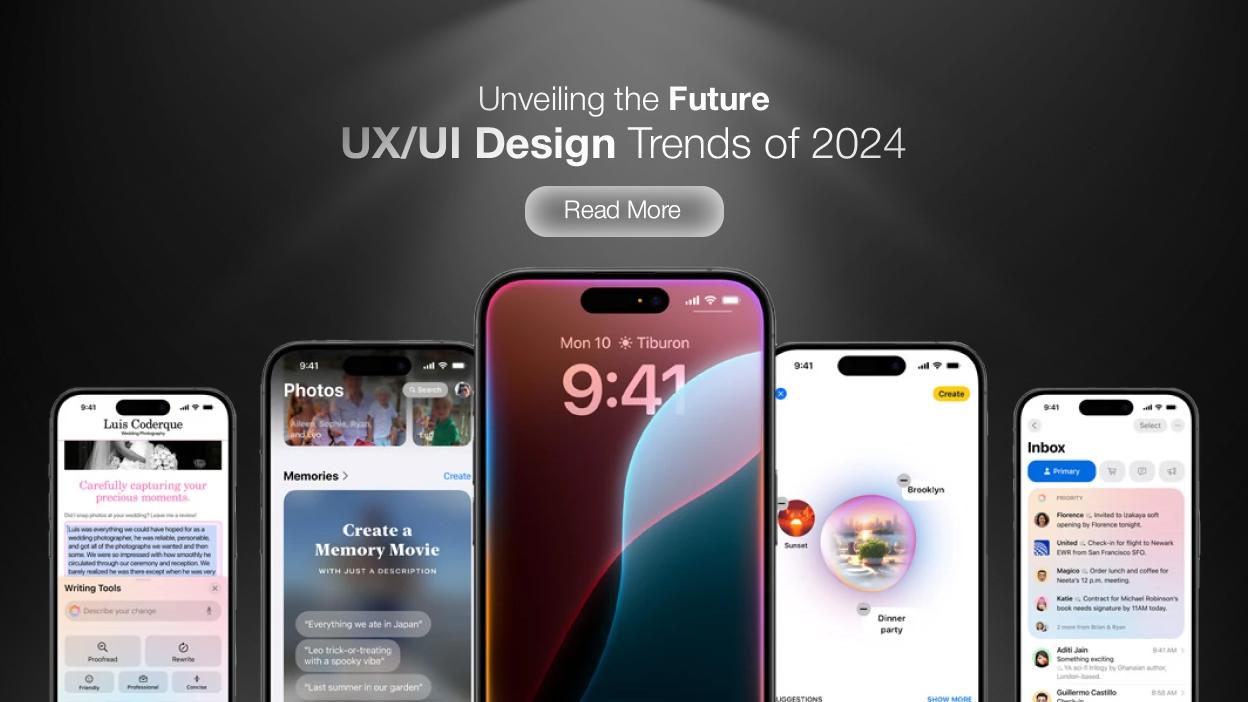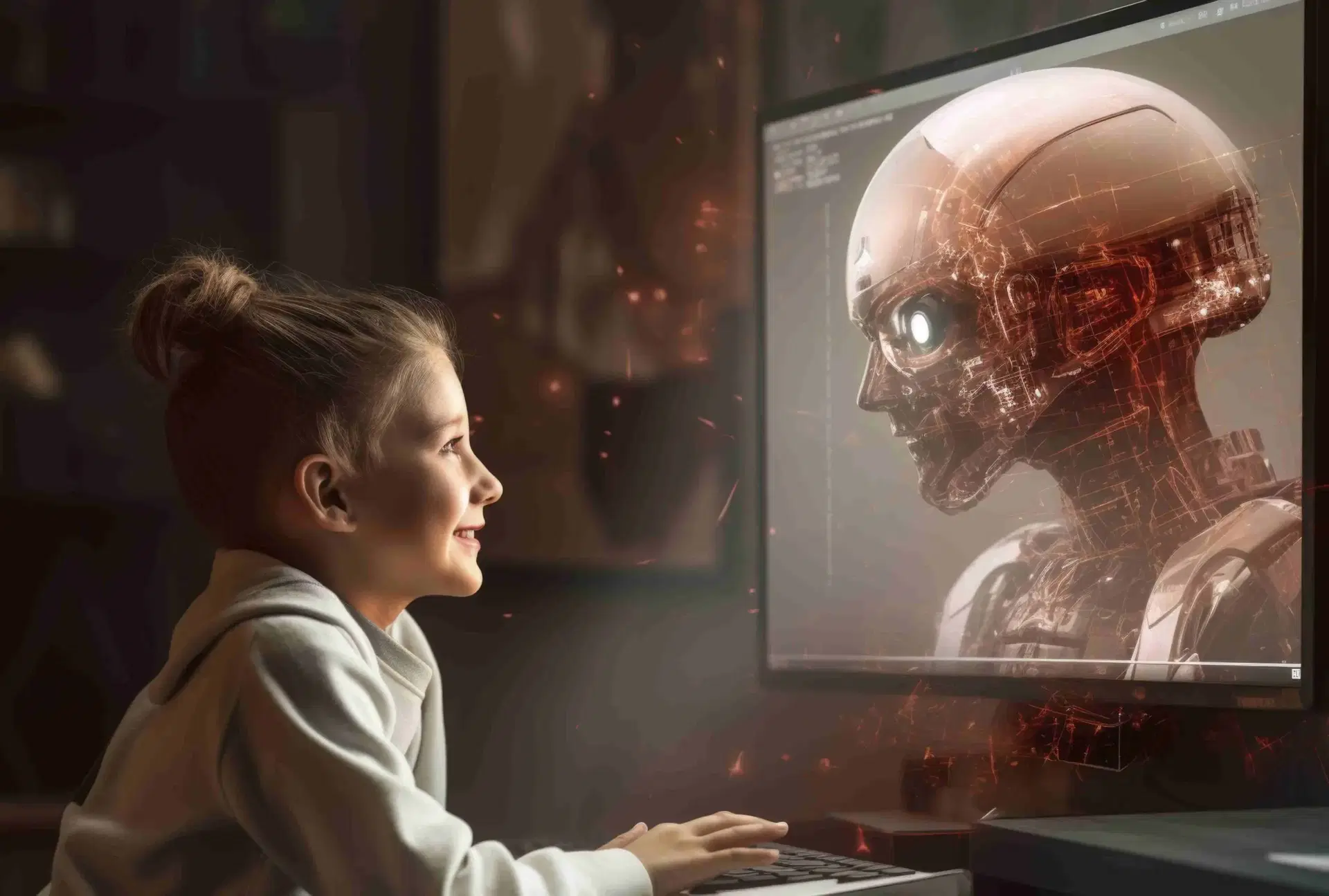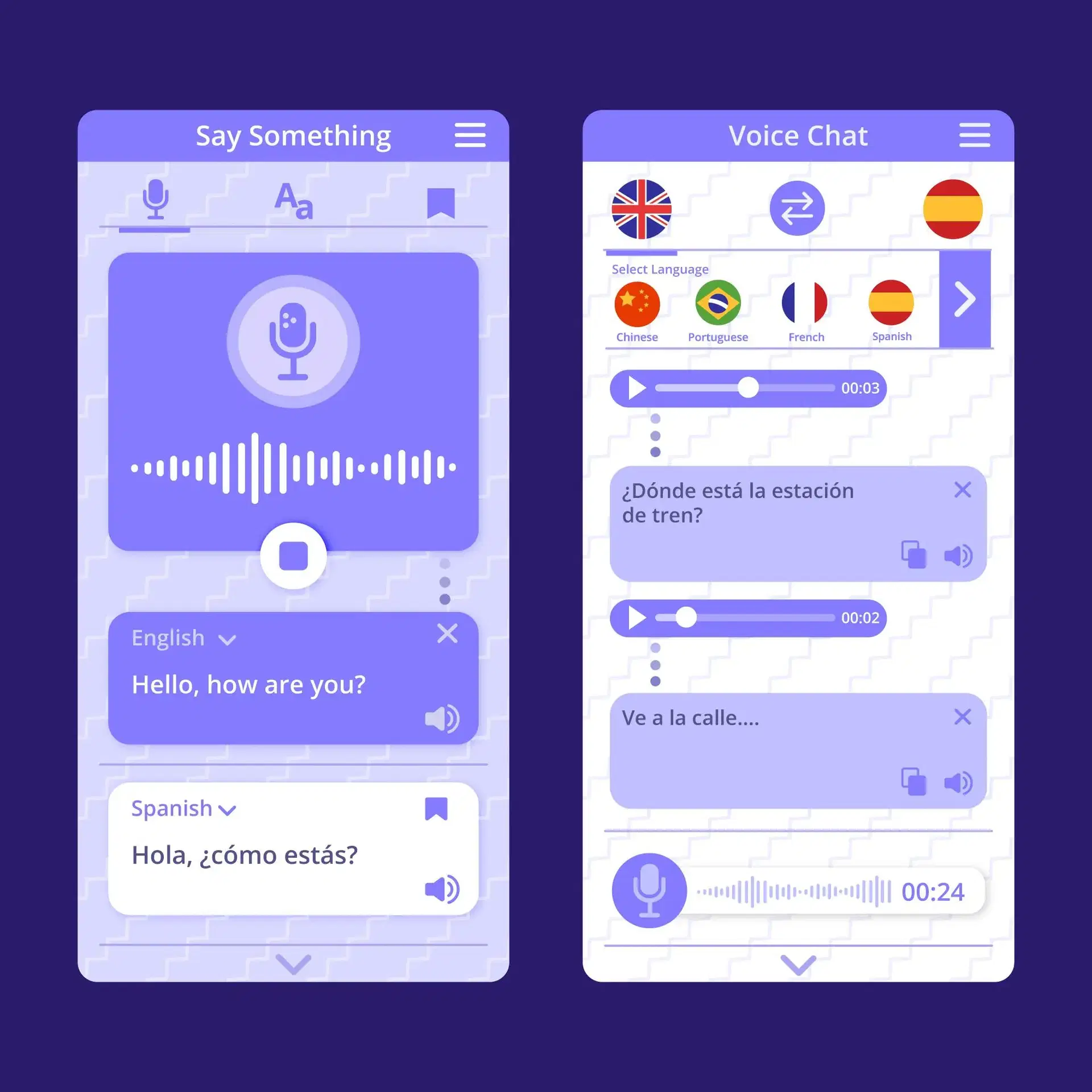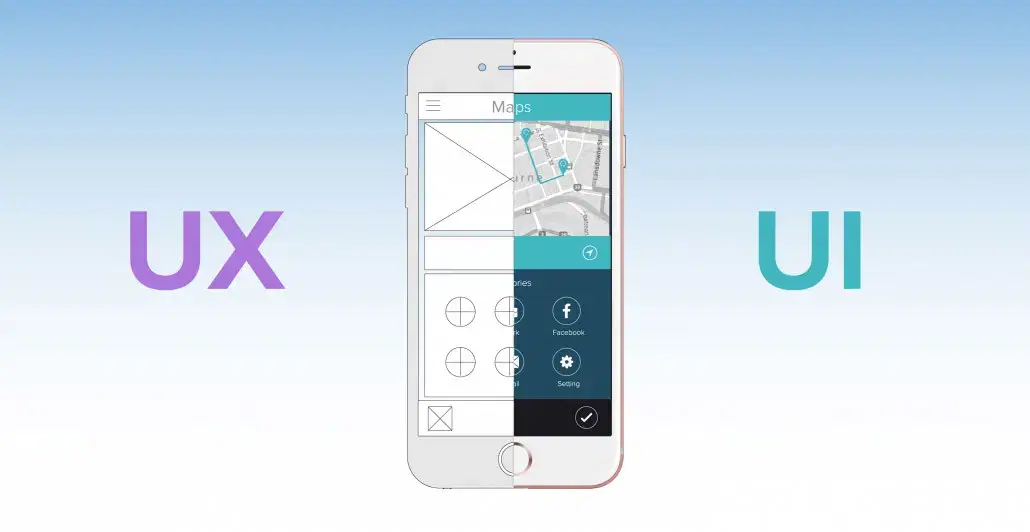Unveiling the Future: UX/UI Design Trends of 2024
Author
Share This Article

Table of Contents
UX/UI Design Trends Emerging in 2024
UX/UI design is the way to provide users’ needs in a digital setting. However, digital design trends are always changing. Some new styles and needs that are likely to shape the future of UI/UX design in 2024:

1. The Exciting Role of AI:
In recent years, significant progress has been made in developing AI systems. While there are ethical considerations, AI-powered personalization will enable designers to build more responsive and attractive user interfaces. Also, AI-powered chatbots can provide improved customer service and feedback, bringing efficiency and responsiveness to customer service.
2. Minimalism and Dark Mode:
Users are preferring dark and minimalistic designs nowadays. In 2024, the majority of websites will be simplistic and free of clutter, easy to navigate. And more and more websites are already turning to dark modes, because it reduces eye strain and consumes less power for the devices.

3. Voice User Interface (VUI) and Conversational Design:
Our smart devices have made us accustomed to the convenience and efficiency of using voice commands. So UX/UI designs must incorporate these features more, allowing users to experience seamless interactions without pressing any buttons.
With these technologies, designers can build virtual assistants with a more natural and intelligent feel. It will make users feel valued and engaged.
4. AR and VR for Interactive and Immersive Interfaces:
Recently, the use of AR and VR for immersive interfaces has also become more commonplace. Virtual Reality is the technology that makes users feel like they are inside a computer-generated world, letting them move around and experience things as if they were real. And Augmented Reality brings virtual elements into the images of the real world.
It may sound like science fiction, but these technologies are actually becoming surprisingly accessible. This is why they are extremely likely to be used by UI/UX designers. They will be most used in industries like gaming, but will be handy in areas like education and e-commerce too. This shift will significantly change the digital experiences of average users.

5. Blockchain and User Trust in UI/UX:
Blockchain is a secure and transparent shared database. Traditional data-sharing systems have many security issues. Their transaction systems are difficult and vulnerable to fraud and data leaks. Blockchain provides data privacy and security, making it an increasingly reliable method for digital interactions.
Website creators and planners should focus on integrating blockchain into the user interface in a way that will make authentication easier. It will also guarantee secure transactions and protect sensitive data. As a result, the users will get a safer and more dependable digital experience.
6. Scroll-based storytelling:
This is another growing trend that users are naturally embracing. In this approach, you can access traditional visual storytelling elements with the intuitive action of scrolling. As users can navigate pages effortlessly without clicking in this way, it encourages them to stay on the website longer, and use it more often. So it is no wonder that both designers and users alike are choosing this system in 2024.
7. Edge computing for faster loading:
Edge computing means the data is processed in a server as close to the user as possible. It ensures smoother operations and quicker results. This technology has already been a game changer for many areas of UI/UX design. In 2024, it will continue to be even more significant, especially for real-time applications. The designers will need to focus on building well-designed interfaces for edge computing to provide user satisfaction.

8. Mobile Devices First:
In 2022, more than 50% of the world’s web traffic came from mobile devices. And this number is likely to grow even more. To utilize this fact, digital designers need to build accessible and inclusive mobile-friendly interfaces.
Mobiles are convenient, but they do have some limitations, such as smaller screens, slower internet, and a minimal number of buttons. Thus, the UI for them should be appropriately responsive and efficient, focusing on gesture-based interactions.
In short, digital designers must concentrate on these emerging technologies for design tools and framework. They are highly likely to control the world of UX/UI in 2024.
Conclusion:
In 2024, UX/UI design will be shaped by AI-driven personalization, minimalistic aesthetics, and dark modes. Voice User Interfaces (VUIs) and AR/VR will enhance interactions and immersion. Blockchain will improve security, while scroll-based storytelling and edge computing will boost engagement and performance. With a focus on mobile-first design, these trends will drive the future of user experiences.